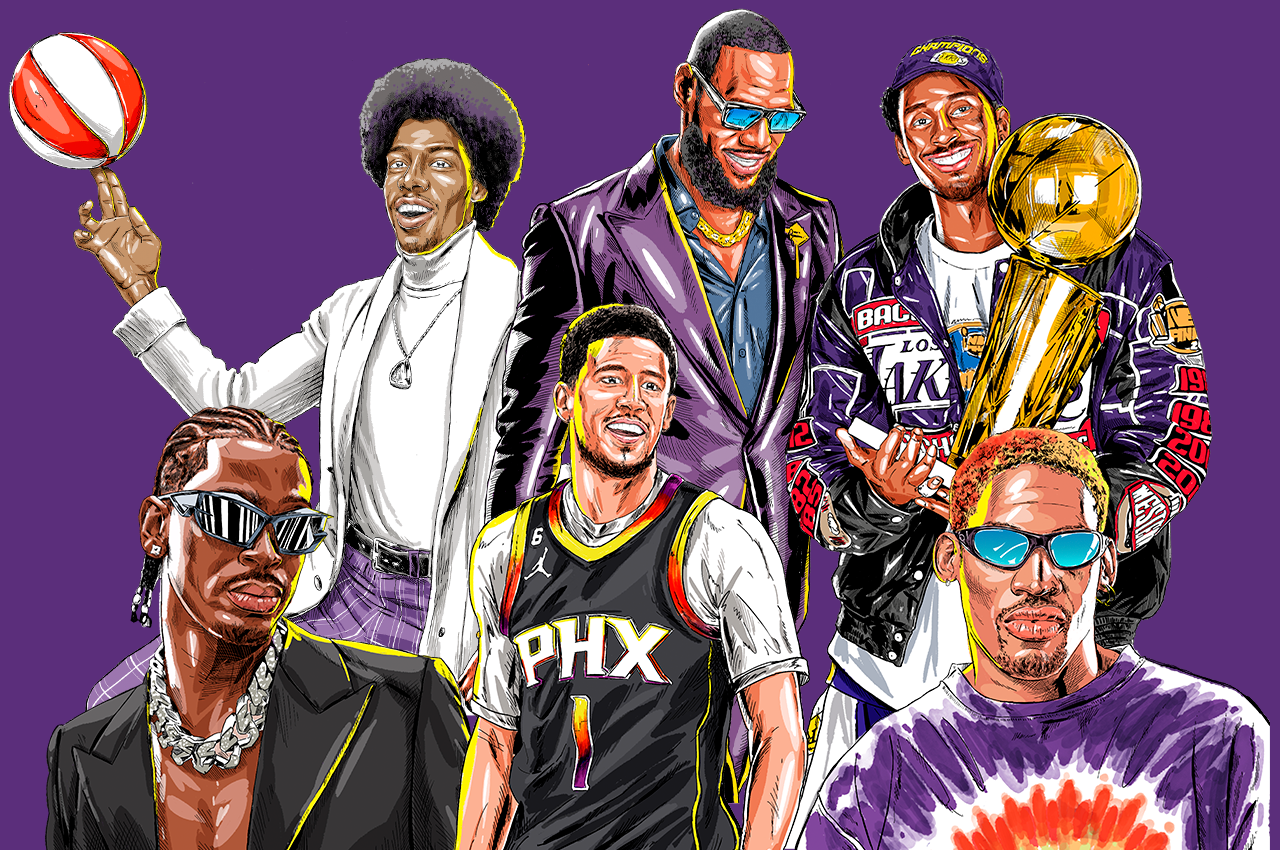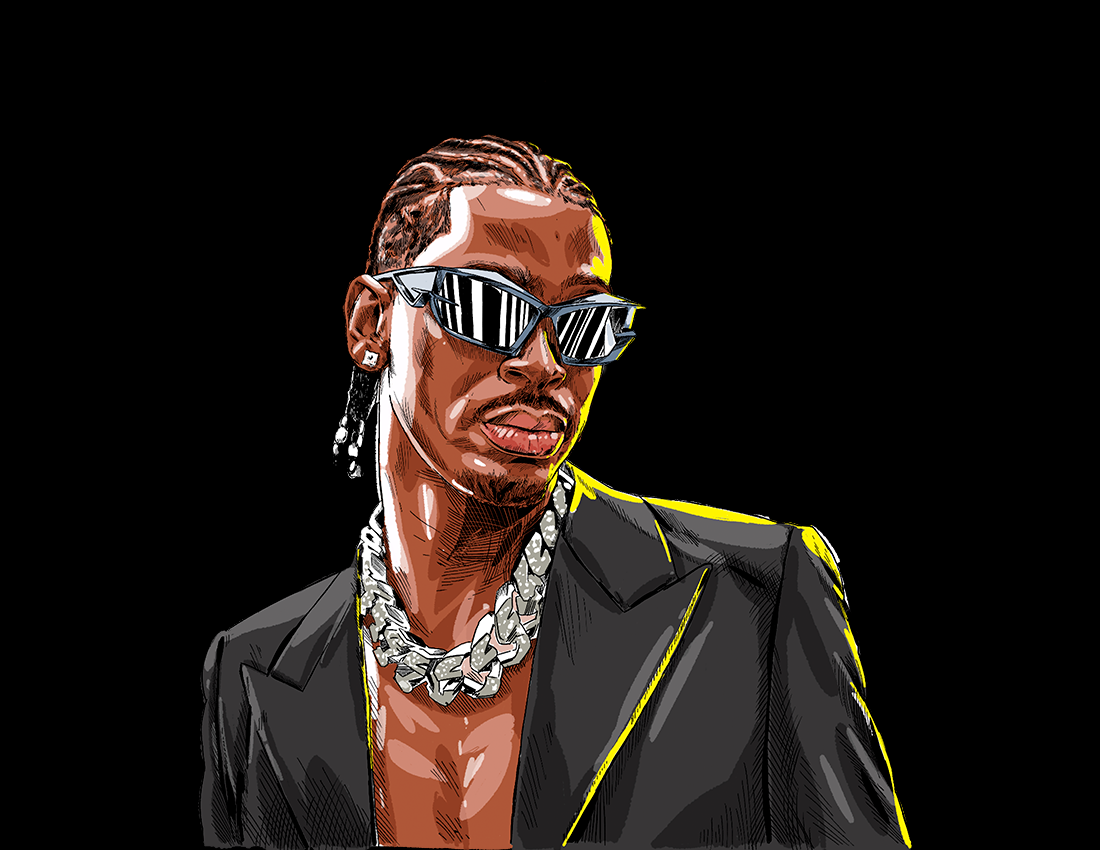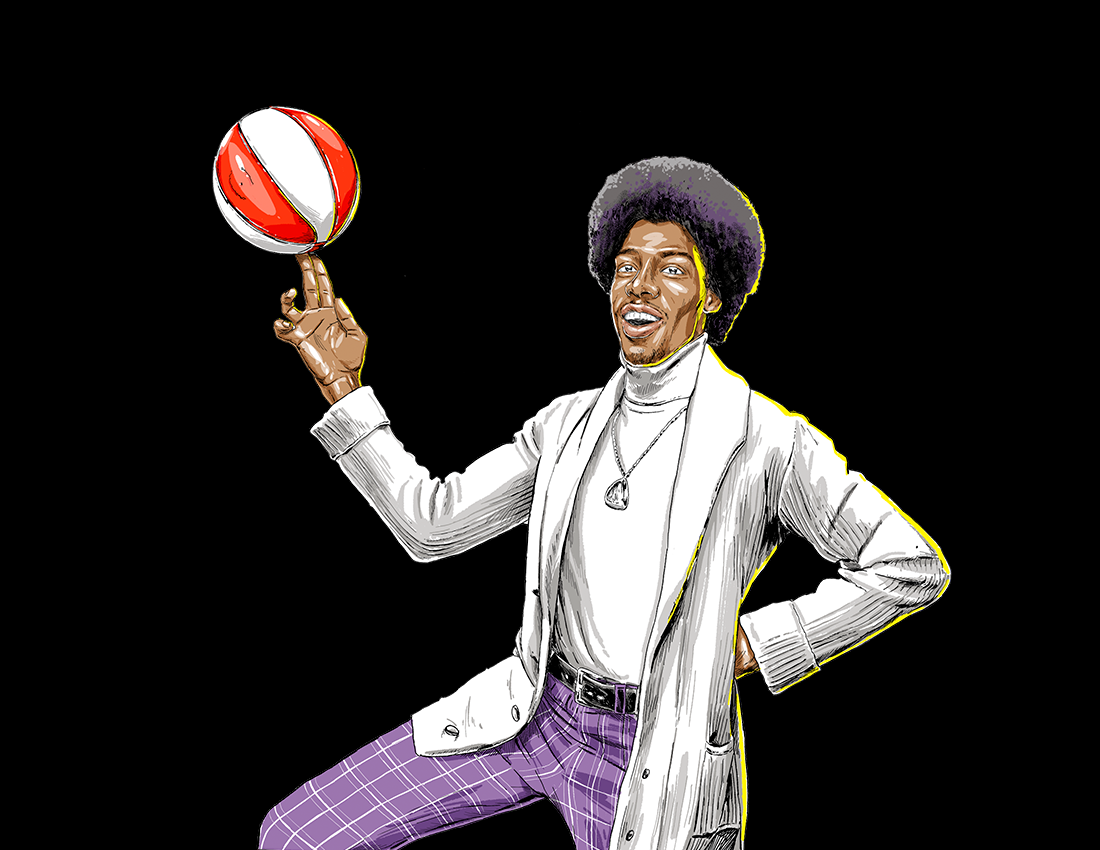
Keith Vlahakis

Audio By Carbonatix
“Fly: The Big Book of Basketball Fashion” is an oversized hardcover tome, 224 photo-packed pages about the personal style of NBA players through the years.
But don’t call it a coffee-table book.
“To me, it’s cultural criticism, and so it’s not just ‘Buy this book and look at the pictures,'” author Mitchell S. Jackson says. “I spent as much time revising this as I do any other piece of writing, so I do want people to know that there’s actual writing in the book – labored over and conceived and revised.”
Jackson tracks the evolution of the players’ style through six eras: The Conformists (1946-1963), Flamboyance (1964-1980), Jordan (1981-1998), The Iverson Effect (1999-2009), Dress Code (2010-2015) and The Insta-Tunnel Walk (2016-today).
We’re thankful for you. Are you thankful for us?
We feel thankful for our staff and for the privilege of fulfilling our mission to be an unparalleled source of information and insight in Phoenix. We’re aiming to raise $30,000 by December 31, so we can continue covering what matters most to this community.
Help us continue giving back to Phoenix.
A perusal of the book, which debuted in September, reveals countless photographic gems: Bill Russell buttoned up in a shirt and tie, Dennis Rodman in a crop top and belly chain, Michael Jordan’s bold and boxy suits, Pete Maravich in disco chic, Allen Iverson’s cornrows and tattoos, LeBron James’ “I Can’t Breathe” T-shirt, and Shai Gilgeous-Alexander looking devastating in Tom Ford.
The photos are a delight and worth revisiting again and again. But an understanding of the role fashion has played in the culture and appeal of the NBA comes through Jackson’s essays and the various asides that pepper the book – features like an interview with a jewelry designer with many NBA player clients, or a list of the top 10 sneakers of all time.
Jackson, a native of Oregon, is the John O. Whiteman Dean’s Distinguished Professor in the Department of English at Arizona State University. He won the Pulitzer Prize for his profile of Ahmaud Arbery for Runner’s World magazine and is the author of one novel (“The Residue Years”) and one collection of short stories (“Oversoul”). His most recent work can be seen in the latest issue of the New York Times Magazine. He is currently working on his next novel and a piece for Esquire.
We recently spoke with Jackson about “Fly: The Big Book of Basketball Fashion.” Answers have been edited for space and clarity.

Shai Gilgeous-Alexander
Keith Vlahakis
Phoenix New Times: How did your work on “Fly” get started?
Mitchell S. Jackson: The genesis of it was my editor at Esquire is friends with the publisher of Artisan and he obviously knows my work. My very first column was on basketball, he knew I loved fashion, so he brought the idea to me, and I like everyone else had been paying attention to how much emphasis the NBA had been putting on their players, the fashion of their players, so it seemed like a good idea.
But the longer answer is that I played high school and college basketball and have loved fashion since I was a child -looking at GQ magazine and Esquire as a kid – so this is really kind of a dream project for me in the long scheme of things.
How did you decide to organize the book by eras?
The first idea I had was to organize it by decades. But my editor pushed me on that and said, “Well, decades are actually kind of arbitrary.” I was like, “Oh yeah, you’re right.” We need eras, because eras are defined by some kind of phenomenon, whether that’s historical or social or cultural. So it became more intensive research because I had to try to figure out where the delineations were and what were the things that were defining those differences.
What kind of research goes into a project like this?
It tapped all my basketball knowledge. The first thing I had to do was really become familiar with the inception of the league and what came before. And then I had to do a lot of research on people who played before I was alive, those early heroes. And then actually find pictures of them in street clothes or fashion, which was super hard because why would George Mikan be photographed in his suit? So that was tough.
But when I got to the 1970s and certainly the 1980s, when I was alive, it got a little easier to choose the players. I would go through an era, see who were the stars, see if I could find photos of them and then do it all again (for the next era). Finding the photos was often difficult, especially for the early times. Later, I could be like, “Hey, GQ, you shot a cover of Chris Paul. Can we license that photo?” But early on, it was a lot more difficult.
How many pictures did you have to go through?
I can’t even tell you. But I’ll say that we also had a great photo editor, because sometimes I would say, “Artis Gilmore was a stylish player, please find all the photos you can of Artis Gilmore from the 1970s.” But sometimes we would find a picture of a player, but it was outside the era, so I couldn’t use it.
Talk about the intersection of the NBA and hip-hop, which you examine in the book.
Hip-hop just celebrated its 50th anniversary. And I think hip-hop really comes to the fore around the Iverson era – right before that era and then obviously Iverson was the catalyst for hip-hop in the NBA. The thing that I think distinguishes the Iverson era is Iverson is the same age as me. We’re both 48 years old, so we don’t know an America without hip-hop, so Iverson was the first generation … You look at Jordan before him. Jordan was born pre-hip-hop. And so I think Iverson and Jermaine O’Neal, Rasheed Wallace, Damon Stoudamire, all those guys were guys who were born into hip-hop. So it wasn’t just music you listened to, it was actual culture to them. So I think that infused the NBA with that culture when they came to be the prominent players in the league.

Julius “Dr. J” Irving
Keith Vlahakis
Do you have a favorite era of basketball fashion?
The era of Flamboyance. I think that’s when the most risk-taking was happening. People compare it to the era now, but I think that the era now, because of the LGBTQIA, because of the way gender has been reconceptualized, I think it’s easier for these players to do things. It was a greater leap coming out of the conventionalism of the 1950s to go to the 1970s; to me, it’s a much bigger leap than what these players are doing now, and it was less culturally supported. It wasn’t mainstreamed in the way that these kinds of fashion risks are now.
I like that era because we get Walt Frazier, we get Dr J., we get Artis Gilmore. My favorite picture, one of them at least, is a picture of Pistol Pete, a white guy. I used to watch his basketball tapes when I was young, and he was one of the best ball-handlers ever. And he was really flamboyant and there’s actually a photo that I found, and he has a butterfly collar on, and glasses on, and a suit, and a chain with his name on it. I’m like, wow, this is really reflective of how he played. So I like when the fashion seems to represent a person’s personality or character.
Who are some of your favorite players in terms of their personal style?
I like LeBron because I think he dresses like who he is in the world – again, a representation of his personality. He knows that he’s the face of the league, and he dresses like that. I think a really great example is the suit he wore the night he broke Kareem (Abdul-Jabbar’s) scoring record. I also like Shai Gilgeous-Alexander, who was voted most fashionable man in the world by GQ two years running. So that’s a big thing: As an athlete, he was chosen over the Hollywood people. But I also like his cousin, Nickeil Alexander-Walker, who’s less flashy than Shai, and also not a huge star, but has great style. And I like D’Angelo Russell in L.A., who’s like a preppy guy, but preppy with flash, which I appreciate.
What kind of feedback have you received about “Fly”?
I’ve gotten really great feedback. I’ve actually been contacted by the NBA, who sent it around to all the teams. I don’t know who on the teams has it, but I’ve been contacted by a lot of people in the league – GMs, owners, a couple players. For me, the greatest thing was seeing Dr. J and Iceman Gervin holding the book and appreciating the book. A friend of mine knows them and gave a book to Dr. J, so that was the ultimate for me.
How did you end up at ASU?
Because of Natalie Diaz, who’s a great poet and a friend. She and I actually won Pulitzers the same year together, but I knew her before that. She’s one of my favorite poets. She explained to me how great ASU was. It really wasn’t me buying into Arizona, it was me buying into Natalie and coming to live in Phoenix.
The school is great, my colleagues are great. I’m still learning my way around Phoenix, learning where to go, still learning which restaurants I like. The shopping is surprisingly great. I spend a lot of time at Fashion Square. I have some good things to say about being a Phoenician.